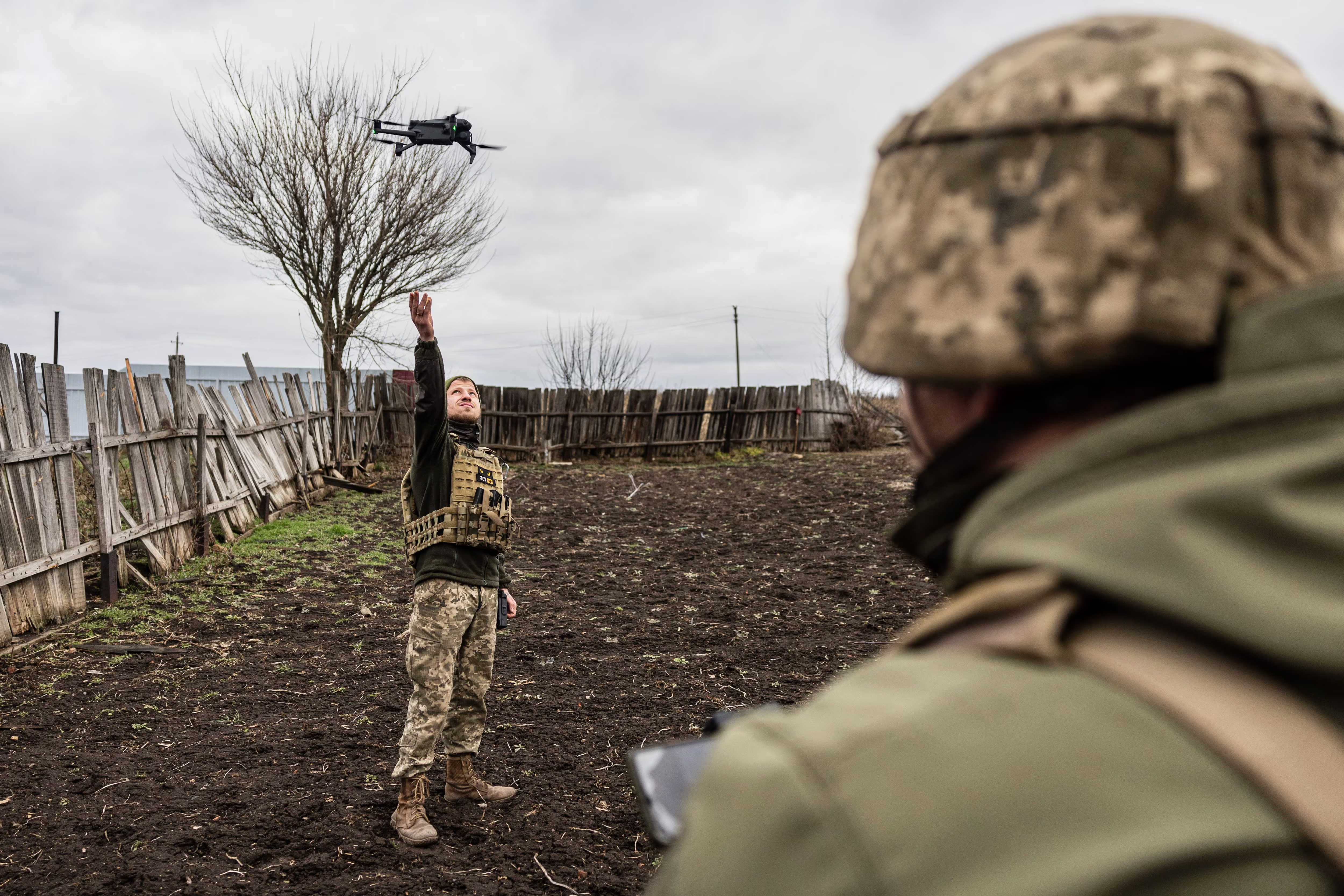Hardly a day has gone by without news of Russia’s war of aggression since they invaded Ukraine in February 2022. Amidst the tragedy of the present war, we see glimmers of the future of war. A future that’s coming faster, not slower. A future we can’t afford to miss.
Uncrewed ships strike crewed ships. Uncrewed aircraft strike ground targets and other aircraft. Expendable platforms negate expensive capital platforms. Uncrewed assets coordinate in such a way that the sum of effects is greater than the parts. Commercial capabilities outmaneuver exquisite government programs.
Creativity matched with capacity overcomes capability. At the heart of it all is autonomy.
The Defense Department needs to get on board or risk being left behind. The commercial sector has invested around $200 billion in self-driving vehicles alone over the last decade on top of investments in air and maritime drones. During the 2022 Super Bowl, 500 coordinated drones performed at halftime, and in 2021, a Chinese company created an aerial light show with over 5,100 simultaneous drones. Meanwhile, the Department of Defense still has no autonomous program of record or commercial acquisition strategy set to deliver reliable, scaled autonomous platforms for our warfighters.
That said, there are signs of promise. In December 2020, I, Preston Dunlap, led the Department of the Air Force to achieve the first collaborative flight of an XQ-58 drone alongside an F-22 and F-35 while enabling the F-22 and F-35 to communicate with each other for the first time via a communications translator — all in less than a year. This opened eyes to what’s possible and paved the way for what is now known as collaborative combat aircraft.
The next year, in September 2021, the Navy established Task Force 59 to kick start the integration of maritime drones into the service’s Central Command fleet experiments. Since then, Task Force 59 has conducted well over 30,000 hours of testing and brought commercial companies closer to their operational customers while simultaneously collecting data undersea and on the surface throughout the region.
And in October 2022, Air Forces Central established Task Force 99 with a similar goal for the U.S. Central Command air domain, later followed by Task Force 39 for U.S. Army Central Command.
At the heart of this progress is software.
I, Stephen Wilson, backed the stand-up of Kessel Run to bring agile software to our air operations centers. As senior leaders in the Air Force, we both championed initiatives such as Platform One and Cloud One to deliver software at scale, not just for a single platform, but for the Space Force and Air Force enterprise as a whole through a development security operations — or DevSecOps — approach that mirrors best practices found in Silicon Valley.
These efforts became crucial in helping push the Department of Defense-wide software modernization initiative, which, together with the creation of the Chief Digital and AI Officer, have the potential to enable software and algorithmic deployment across the department.
These efforts are essential, but not sufficient. Operational capabilities must be delivered at scale.
The House Armed Services Committee’s version of the FY24 National Defense Authorization Act includes language to study enterprise software approaches and develop plans for investment in collaborative autonomous systems. We applaud the legislation’s recognition of the importance of autonomy, but we’d encourage Congress to take even further action now to deploy software and systems for our warfighters.
A good start would be the Autonomous Systems Adoption & Policy (ASAP) Act introduced by Congressmen Rob Wittman (R-Va.) and Dutch Ruppersberger (D-Md.). The bill would establish and resource a Joint Autonomy Office with the sole purpose of expediting development and delivery of autonomous systems.
If enacted and funded, the legislation has the potential to scale the early successes of initiatives like enterprise software, collaborative combat aircraft, and Central Command Task Force experimentation into programs or simply go direct to commercial procurement.
How quickly the Pentagon can adopt commercial best practices in the development of autonomous systems and the rapid deployment of those systems will likely be decisive in combat. We’ve seen this already in relatively small numbers in Ukraine. Now imagine integrating thousands or tens of thousands of autonomous aircraft, ground vehicles, submarines and ships. We’ve done it for Super Bowls and light shows. Why not for our military?
It’s time to scale autonomy and get tech in the hands of those who need it most.
Preston Dunlap is the founder of consulting and investing firm Arkenstone Ventures and an adjunct senior fellow at the RAND Corp. He serves on autonomy company Applied Intuition’s federal board. He was the first chief technology officer and chief architect of the U.S. Space Force and Air Force and also served four defense secretaries, including as director of program analysis.
Retired Air Force Gen. Stephen Wilson is a senior fellow at the National Defense University and a member of autonomy company Applied Intuition’s federal board. He previously served as vice chief of staff of the Air Force and deputy commander of U.S. Strategic Command.








